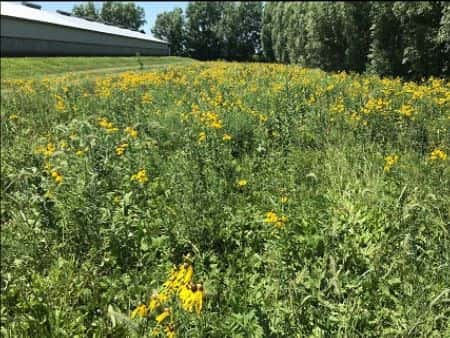
Monarch butterflies and other pollinators, such as bees, have seen sharp declines in population over the past 10-15 years due to harsh winters, according to the Iowa Department of Natural Resources. While the growth of these populations is a concern, one specialist believes Iowans can help sustain them as well as improve aspects of agriculture in the state. Iowa State Extension Wildlife Specialist Adam Janke studies wildlife populations and their habitats, and he believes creating more habitats can help attract and sustain more pollinators while helping Iowans improve water quality, soil health, and flood water management. These habitats are low-maintenance areas of grassland that are filled with native plants, flowers, and vegetation and can be started by anyone.
Janke tells KCII News the potential savings individuals could see if they start a pollinator habitat, “We did a study where we looked at annualized costs over 10 years. So this is taking all of the expenses that we would encounter in converting a grass area into a pollinator habitat and spreading them out over 10 years and doing some kind of fancy economic analysis. We found that the cost was $111 per acre per year. In contrast, our estimates for maintaining the same area in lawn or turf grass, our estimate was around $600 per acre per year. So the savings can be really meaningful if you’re successful in converting that into the pollinator habitat.” Janke says these habitats are best created in larger grassland areas and not in urban areas. Individuals can start up a pollinator habitat by setting aside land for native plants and flowers.

